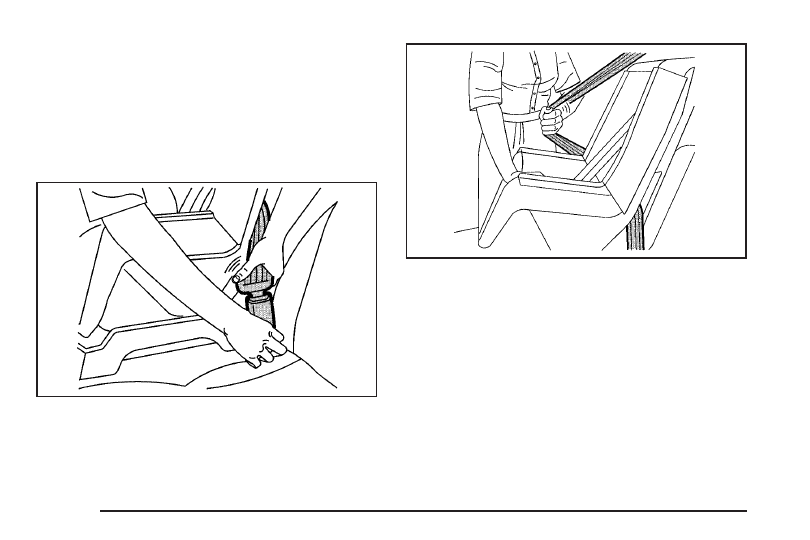Buick LaCrosse (2009 year). Manual - part 4

If more than one child restraint needs to be installed in
the rear seat, be sure to read Where to Put the
Restraint on page 1-40.
1. Put the child restraint on the seat.
2. Pick up the latch plate, and run the lap and shoulder
portions of the vehicle’s safety belt through or
around the restraint. The child restraint instructions
will show you how.
3. Push the latch plate into the buckle until it clicks.
Position the release button on the buckle so that
the safety belt could be quickly unbuckled if
necessary.
4. Pull the rest of the shoulder belt all the way out of
the retractor to set the lock.
1-48